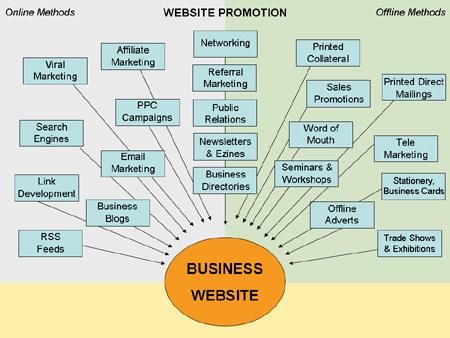In today’s dynamic work landscape, attracting and retaining top talent goes beyond competitive salaries and enticing benefits. A key ingredient in building a thriving and productive workforce is fostering a culture of job satisfaction. Satisfied employees are not just happier; they are more engaged, productive, and committed to an organization’s success. This comprehensive guide delves into the multifaceted concept of job satisfaction, exploring its significance, drivers, and actionable strategies to cultivate a workplace where employees flourish.
Deciphering Job Satisfaction: More Than Just a Buzzword
Job satisfaction is a complex emotional state that reflects an employee’s overall contentment with their work experience. It’s a tapestry woven from various threads, including the nature of the work itself, the work environment, relationships with colleagues and superiors, opportunities for growth, and recognition for achievements.
While extrinsic factors like compensation and benefits play a role, intrinsic motivators like a sense of purpose, autonomy, and mastery over one’s work are equally crucial in driving true job satisfaction.
The Ripple Effects of Job Satisfaction: Why It Matters
Job satisfaction is not merely an individual’s emotional state; it profoundly impacts the entire organization. High levels of job satisfaction correlate with:
- Enhanced Productivity and Performance: When employees feel valued and engaged, they naturally invest more effort and dedication, leading to higher-quality work and increased productivity.
- Reduced Turnover and Absenteeism: Dissatisfied employees are more likely to seek opportunities elsewhere, leading to increased recruitment and training costs. Satisfied employees, on the other hand, are more loyal and committed, reducing turnover rates.
- Improved Customer Service: Happy employees translate to happy customers. Satisfied employees are more likely to go the extra mile, leading to increased customer loyalty and a positive brand reputation.
- Positive Work Environment: A workplace permeated with job satisfaction fosters a collaborative and supportive atmosphere where employees feel comfortable sharing ideas and contributing to a common goal.
Cultivating a Culture of Job Satisfaction: Key Contributors
Understanding the factors that contribute to job satisfaction is the first step in creating a work environment where employees thrive. Here are some key contributors:
1. Meaning and Purpose: Aligning Work with Values
Employees are more likely to feel fulfilled when their work aligns with their personal values and contributes to a larger purpose. Managers can foster this by:
- Clearly Communicating the Company’s Mission and Vision: Ensure employees understand how their individual roles contribute to the overall goals of the organization.
- Providing Opportunities for Employees to Use Their Strengths: Assign tasks and projects that align with employees’ skills and interests.
- Encouraging Employee Involvement in Meaningful Initiatives: Create opportunities for employees to participate in projects that align with their passions, such as volunteering or sustainability initiatives.
2. A Psychologically Safe and Inclusive Environment: Fostering Trust and Openness
A psychologically safe workplace is one where employees feel comfortable expressing their opinions, sharing ideas, and making mistakes without fear of judgment or retribution. This fosters:
- Open Communication: Encourage open dialogue, active listening, and constructive feedback.
- Respectful Interactions: Promote a culture of respect where everyone feels valued and heard.
- Diversity and Inclusion: Embrace a diverse workforce and create an inclusive environment where everyone feels a sense of belonging.
3. Role Clarity and Autonomy: Empowering Employees to Excel
When employees understand their responsibilities, have clear expectations, and are empowered to make decisions, they feel a greater sense of ownership and control over their work. Managers can promote this by:
- Clearly Defining Roles and Responsibilities: Provide detailed job descriptions and ensure employees understand their expectations.
- Setting Realistic Goals and Deadlines: Collaborate with employees to set achievable goals that are aligned with their capabilities.
- Empowering Employees to Make Decisions: Delegate tasks and provide opportunities for employees to take ownership of their work.
4. Recognition and Appreciation: Celebrating Success and Effort
Recognizing and appreciating employees’ contributions is essential for fostering job satisfaction. This doesn’t always have to be grand gestures; small, consistent acts of appreciation can go a long way. Managers can:
- Provide Regular Feedback: Offer both positive reinforcement and constructive criticism to help employees grow.
- Celebrate Achievements: Acknowledge and celebrate individual and team accomplishments.
- Show Gratitude: Simple acts of appreciation, like saying “thank you” or writing a handwritten note, can make a big difference.
Actionable Strategies to Enhance Job Satisfaction
Implementing the following strategies can significantly impact job satisfaction within your team:
1. Craft a Clear Career Progression Plan
Employees are more likely to feel motivated and engaged when they have a clear path for growth within the organization. Work with employees to create personalized development plans that outline their career goals and the steps they need to take to achieve them.
2. Embrace Flexible Work Arrangements
Flexibility in work hours and location can significantly contribute to employee well-being and work-life balance. Consider offering options like remote work, flexible schedules, or compressed workweeks.
3. Prioritize Employee Well-being
Invest in programs and initiatives that promote employee well-being, such as mental health resources, ergonomic workstations, and wellness programs.
4. Foster a Culture of Continuous Learning and Development
Provide opportunities for employees to expand their skills and knowledge through training programs, workshops, conferences, and mentorship opportunities.
5. Gather Regular Feedback and Act on It
Regularly solicit feedback from employees through surveys, one-on-one meetings, and suggestion boxes. Actively listen to their concerns and suggestions, and take concrete steps to address them.
Conclusion: A Journey of Continuous Improvement
Fostering job satisfaction is an ongoing process that requires commitment, empathy, and a willingness to adapt to the evolving needs of employees. By prioritizing the factors that contribute to a fulfilling work experience, managers can create a workplace where employees feel valued, engaged, and motivated to contribute their best. The result is a win-win situation: a more productive and successful organization and a workforce that thrives both personally and professionally.



